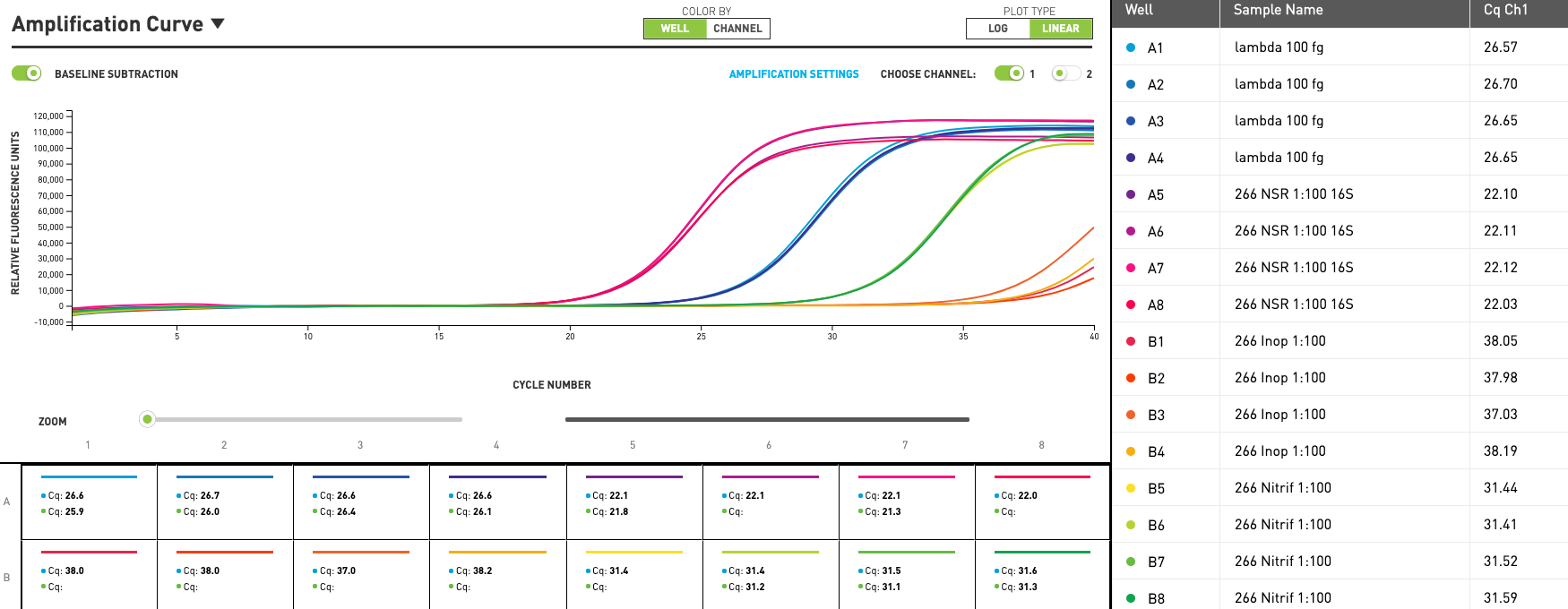- Rapid increase in loading – Ammonia & TKN
- Look at influent loadings – total nitrogen loading is needed
- As both AOB/NOB are slow growing it can take time to catch up to influent increase
- Inhibition – slowing of AOB & NOB metabolism
- D.O. being < 2 mg/L
- COD/BOD inhibition – Rule of Thumb – 80% COD needs to be removed before AOB/NOB tend to fully function in WW
- pH < 7.0 or >8.5
- Alkalinity
- Temperature <12 or >38 Deg C
- Enzyme cofactors – trace metals lacking or being bound
- UV radiation (sunlight)
- Washout
- Slow growth and short MCRT – can lead to AOB/NOB washout (population drop as reproduction is not fast enough)
- This often goes along with inhibitory factors slowing growth rates
- Acute toxicity – kill of AOB/NOB
- Some compounds have acute toxicity – thiourea, carbon disulfide, sulfide, cyanide, phenol
- Total loss of aeration for extended periods with septicity
- Not that common in most WWTP
Tools to directly monitor AOB/NOB populations
- Aster Bio uses molecular tools to track for potential inhibition & washout
- qPCR for wastewater organisms – use primers based on actual WWTP data can directly enumerate populations
- MCA – total microbial census gives data on both AOB & NOB as % of total reads
- Answers questions – total toxicity, inhibition, or insufficient populations for current loadings
What to do if you suddenly see an increase in effluent ammonia
- Run qPCR to identify the root of the problem
- If influent ammonia/TKN increase is the issue
- Slow influent flow if possible, this will give time for AOB/NOB growth
- Adjust environmental conditions in the biological unit to maximize AOB/NOB growth
- Add nitrifiers – decrease time required to adjust to full AOB/NOB population
- Toxicity – loss of all AOB/NOB populations
- Find out what happened!
- Remove problems from influent & increase wasting if it builds up in the MLSS
- Adding nitrifiers or outside MLSS can help but only if inhibitors/toxic agents are removed
- Washout
- Usually not a sudden increase – this is a gradual process, and you have warning
- Reduce wasting rates
- Enhance environmental conditions for AOB/NOB
Check as to why you are seeing increased effluent ammonia
- Something had to change!
- Was it gradual or sudden
- Influent TKN is important - as much as influent ammonia
- If toxicity or inhibition is found, you must eliminate it as much as possible! Added nitrifiers from commercial blends are just as susceptible to inhibition as indigenous.
- qPCR is best tool to find out direct information on the AOB & NOB populations
- If adding nitrifiers, the dose depends upon growth rates and how much ammonia needs to be oxidized. We want to give the best growth environment possible.


 RSS Feed
RSS Feed